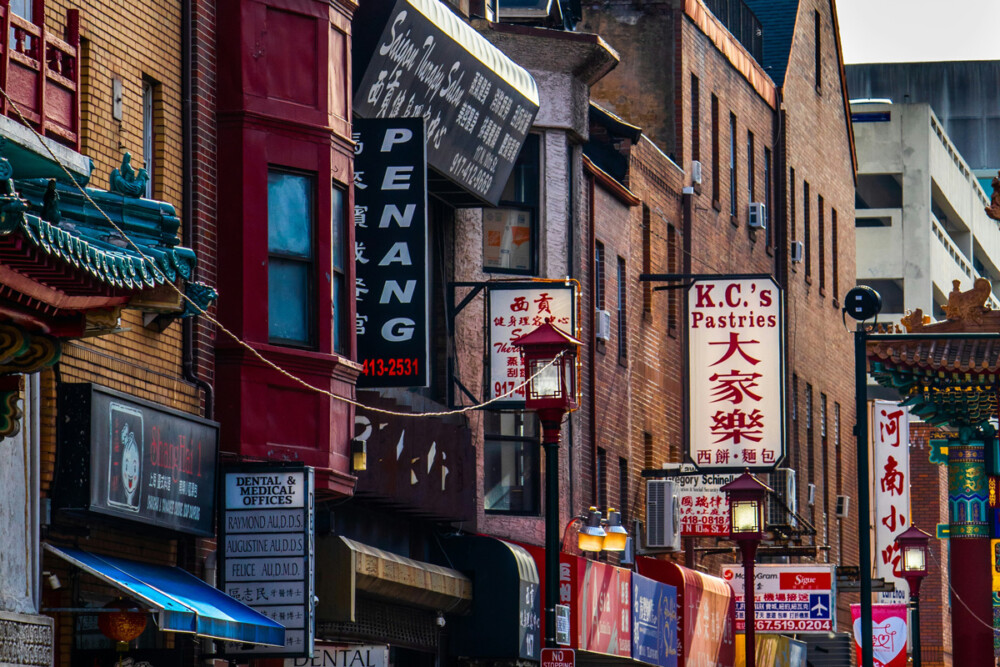
City’s arena study falls short on key environmental questions
Chinatown residents voiced concerns over traffic pollution and greenhouse gas emissions. The studies only partially answer a key question: What are the environmental impacts?
Chinatown residents have raised concerns about air pollution, greenhouse gas emissions during construction, and traffic increases that could worsen air quality. However, the city’s newly released reports only lightly touched upon these critical environmental issues, public health and safety concerns.
For example, the Community Impact Report examined air quality concerns, particularly during construction. However, it lacks the depth of analysis that community groups asked for. The Save Chinatown Coalition RFP called for the study to “build towards a green future” and to “utilize an ecological systems approach to examine the physical, economic, social, health, cultural, and environmental aspects of the neighborhood, recognizing the interconnected and synergistic nature of community life.”
The RFP authors proposed that impact studies address environmental issues like air pollution during demolition, noise and vibration, and greenhouse gas emissions from increased traffic.
Mary Yee—who is the Facilitator of the Technical/Planning Committee of the Coalition to Save Chinatown and a longtime leader in Philadelphia’s AAPI community—said that the points raised in the RFP stem from a concern for the safety of Chinatown residents.
“One of the most serious potential environmental impacts is transportation, especially traffic,” said Yee. She pointed out that car pollution from cars and increased congestion could be a “danger” to vulnerable pedestrians like older adults.
Rather than address these concerns in the initial release, the Community Impact Report recommends additional studies to retrieve measurable data of air quality (p. 12). “We have a lot of elderly people that go back and forth across Market Street because they live around 8th and Locust in the senior housing down there,” said Yee.
How did the studies come together?
On August 26th, the City, in partnership with its partner economic development corporation, Philadelphia Industrial Development Corporation (PIDC), published impact reports on the proposed Sixers arena in Center City. The reports examined the arena’s impacts on the local community, economy, traffic, and design.
The analyses were conducted by several third-party consultants who were contracted by PIDC and paid for by the arena developers, 76 DevCo. According to the City’s website, “the developer had no further involvement, and PIDC and the City retained all control over selection and management of the consultants” after providing funding.
The City states that the impact reports were conducted after a Request for Proposals (RFP) process with Chinatown. One such RFP was submitted in 2023 by the Save Chinatown Coalition, which brought together a team of city planners, real estate and economic development researchers, and traffic engineers.
What did the reports say?
According to the report, environmentally sensitive areas (schools, hospitals, etc.) will not be subjected to the full effects of the “most intense construction activities” of demolition, excavation, and foundation. The remaining construction would have comparatively lower air emissions because they would “require fewer pieces of heavy-duty diesel equipment and would not involve soil disturbance.”
The Independent Traffic Analysis of the 76 Place Proposal admits to a projected increase in traffic congestion, but also assumes 40% of gamegoers will take public transit, which researcher for No Arena in Chinatown Solidarity (NACS) and UPenn PhD candidate Eugenia Ulanova said seems “hugely unrealistic.”
“It doesn’t take into account any of the current fan behavior, in which only about maybe 15% take public transit,” said Ulanova.
Instead, Ulanova called the traffic data collection methodology “truly skewed because they used three New York City sites in their averages, which hugely brought down the auto percentages.”
Furthermore, the study states that even a marginal increase in auto trips above 40% will result in gridlock at critical intersections.
Traffic congestion has a climate cost, too. Transportation accounts for nearly a third of greenhouse gas emissions in the United States. Reducing gridlock was found to mitigate up to almost 20% of CO2 emissions.
Is building something new a viable solution?
As some architects argue, the greenest buildings are the ones that already exist. Some community activists pointed to construction as a waste in the first place.
“We need to extend the life cycle of buildings and stop considering them as ‘throw-aways’ with no consequences,” wrote Debbie Wei, founding member of Asian Americans United, in an op-ed. “Arena owners need to stop saying an arena of 25 years is too old. They need instead to look to renovation and refurbishment as the answer.”
Adaptive reuse—or renovation of existing buildings—is an environmental strategy for reusing building materials rather than extracting new ones. Repurposing an existing building can save 50 – 75% of carbon emissions.
The Coalition to Save Chinatown’s RFP called for a consultant to examine the environmental impacts of adaptive reuse of the Fashion District and Greyhound bus terminal versus demolition and construction of the arena. Reports do not appear to provide such a comparative analysis.
Finally, noise pollution was not included in any of the reports.
According to Mary Yee: “What I see is big business making public policy, and I see that, for Chinatown, it’s been instance after instance of institutional racism in terms of the big infrastructure projects that have been threatening Chinatown since the Vine Street Expressway.”

Photo by Jimmy Woo on Unsplash





